FEBRUARY 2022 INVASIVE PLANT OF THE MONTH
SICIM Email
COMMON BUCKTHORN (RHAMNUS CATHARTICA)
Rhamnus cathartica is a deciduous, dioecious shrub or small tree that can grow to 25 ft. or more. It was introduced to North America from Eurasia as a hedge and landscaping plant. It can be found invading wooded floodplains, disturbed open woodlands, woodland borders, thickets, fence rows, and vacant lots. Common Buckthorn has the capacity to displace native plants in their natural habitats, forming thickets that are difficult to navigate and control. The leaves and fruits are mildly poisonous for humans but are readily eaten and therefore widely dispersed by birds. It has been reported in many counties in Indiana and is listed on the Indiana Terrestrial Plant Rule which prohibits the selling, gifting, exchange, distribution, or transporting of common buckthorn without a permit.
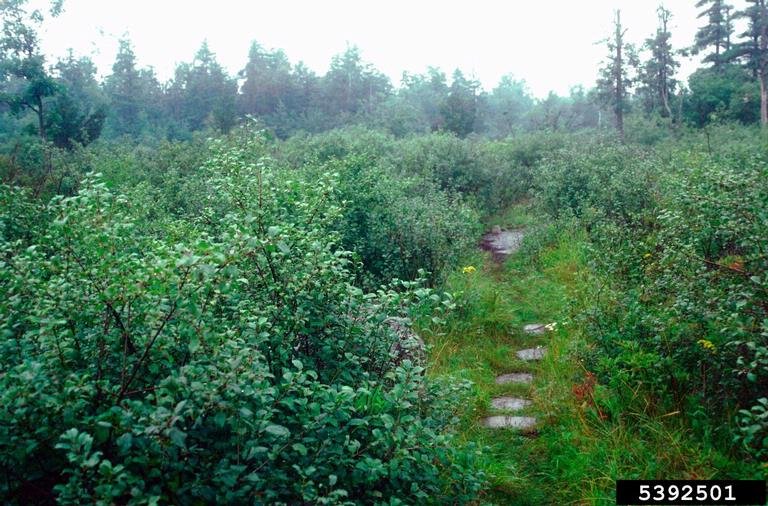
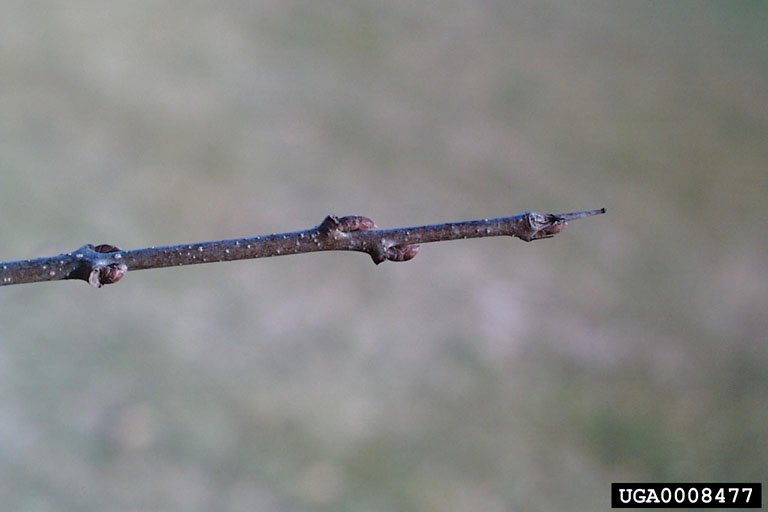

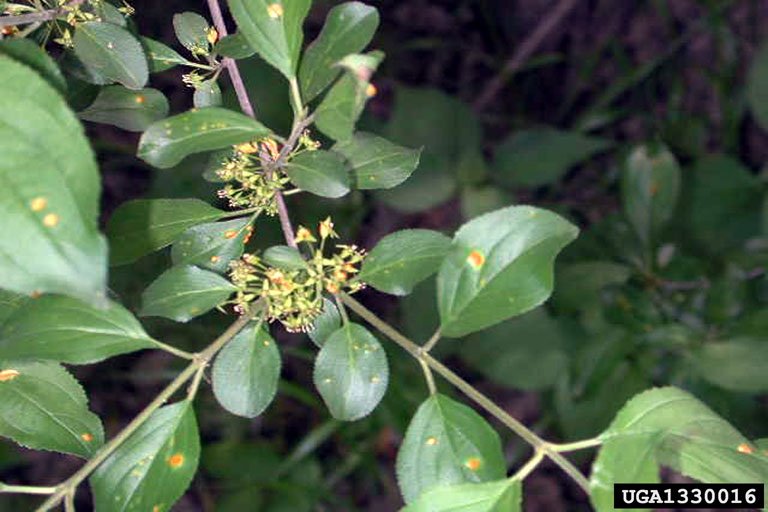
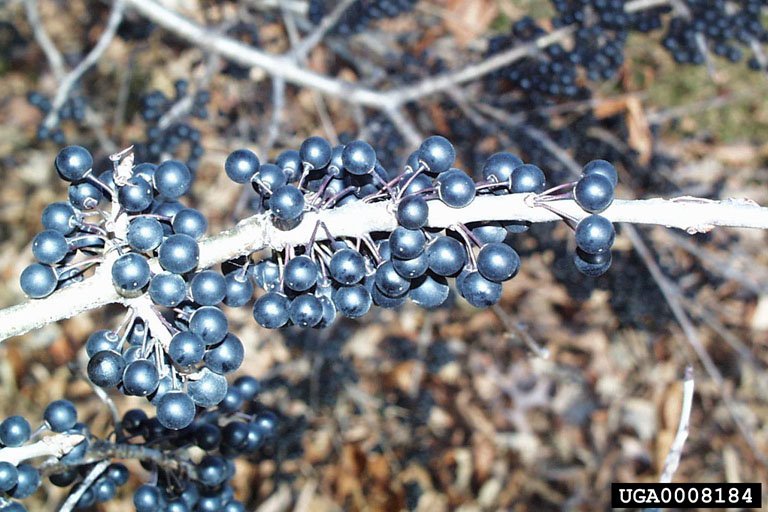
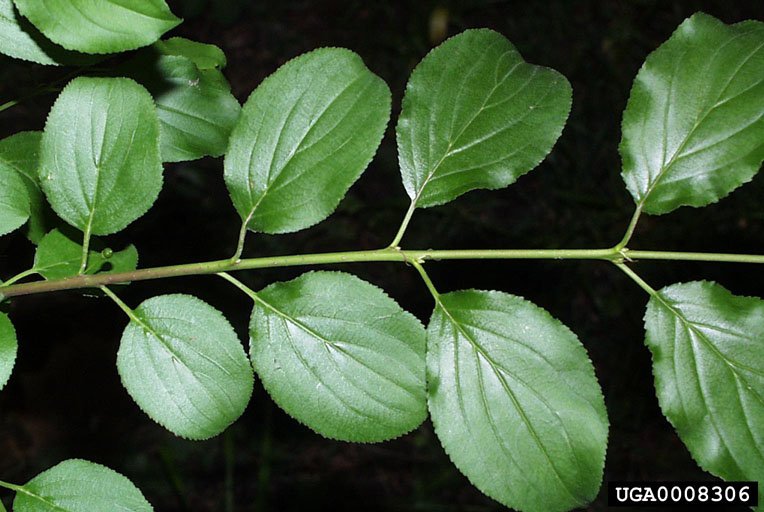
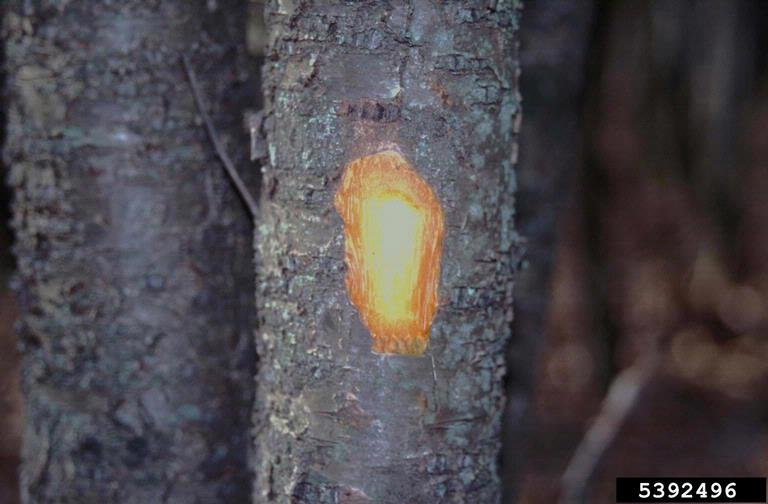
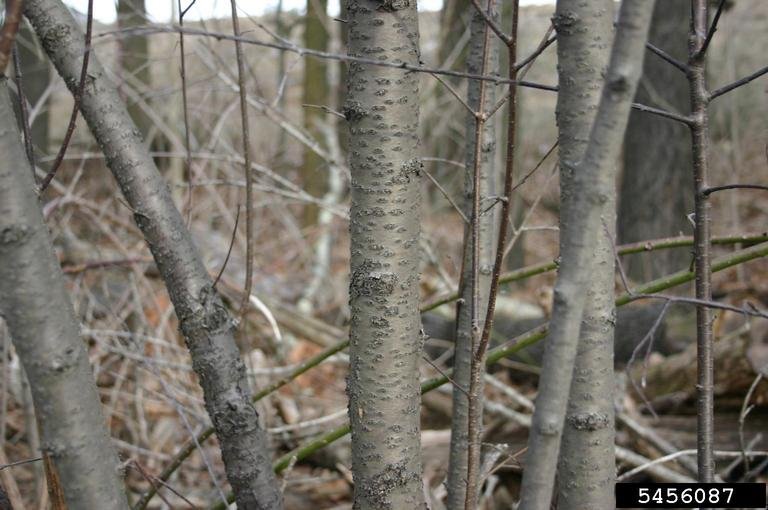
IDENTIFICATION & BIOLOGY: Stems and bark: bark is gray to brown with prominent, dark, eye-shaped pores called lenticels, and fairly smooth but roughening with age. Cutting the bark exposes yellow sapwood and orange heartwood. Twigs often end in sharp spines that are 1/5 – 9/10 in. long. Leaves: leaf arrangement is usually sub-opposite, but examples of opposite and/or alternate arrangements are commonly found. Leaves are dark green, elliptical to oval, 1.5-3 in. long, slightly serrate with 3 to 4 pairs of curving veins and a somewhat folded tip. The deciduous leaves change from dark green to a light green or yellow color that is easily distinguishable and holds its leaves until late in the fall. Flowers: Flowering occurs in the spring, with fragrant, yellow-green, 4-petaled flowers developing in clusters of 2 to 6 near the base of the petioles. Plants are dioecious but male and female flowers are very similar in appearance. Fruits: Produces small, round fruit (6–10 mm across) ripening from green to black in late summer and contains two to four seeds. One shrub can produce a large number of seeds. Seeds are readily dispersed by birds and other wildlife that eat the fruits.
LOOK-A-LIKES: Common buckthorn can look like invasive glossy buckthorn (Frangula alnus), another invasive species that can invade similarly although may not be as widely spread as common buckthorn. It can be differentiated by its spines (absent on glossy buckthorn) and finely toothed leaf edges. Also, glossy buckthorn has alternate leaves while common has opposite or subopposite.There are two species in the Rhamnus genus that are native to parts of the United States, including Indiana. They are alder-leaved buckthorn (R. alnifolia), and lance-leaved buckthorn (R. lanceolata). Alder-leaved buckthorn is smaller than common buckthorn, only reaching a maximum of 3’ in height at maturity. Its flowers have five petals rather than four and it has small green appendages at the base of each leaf stem called stipules, which common buckthorn does not have. Lance-leaved buckthorn has a longer and narrower leaf shape, more than three pairs of veins, and more pointed leaf tips when compared to common buckthorn. Occasionally new species of buckthorn escape from cultivation (Rhamnus davurica, Rhamnus japonica, & Rhamnus utilis for example).
HABITAT & DISTRIBUTION: Common buckthorn (as well as glossy buckthorn) has a wide tolerance for various soil, moisture, and light conditions. It prefers light shade and prefers moist soil but can tolerate more dry conditions. It invades open oak woods, disturbed open woodlands, wooded floodplains, woodland borders, roadsides, prairies, and open fields. It has been reported in several counties in Indiana and is likely more widespread throughout the state. It has spread throughout the northern US states, from Maine, down to Virginia, and across to midwestern states and California.
ECOLOGICAL THREAT: Dense thickets of common buckthorn crowd and exclude most native shrubs and plants from establishing and often eradicating them. It is difficult to remove and can regenerate after cutting or burning. The leaves and fruits are mildly poisonous for humans but are readily eaten and therefore dispersed by birds. Common buckthorn is able to produce a large amount of seeds.
CONTROL: Like other invasive species, a combination of control tactics is necessary to manage common buckthorn. The most effective control is to prevent it from becoming established. Plants should be removed as soon as possible when they are found. Remove young plants before producing fruit by hand pulling or digging, however, root fragments left in the soil may resprout. Controlled burning in spring and fall can be used but burning may need to be repeated annually or biannually for two to three years to deplete the seed bank. Application of systemic herbicides (e.g., glyphosate or triclopyr) on freshly cut stumps or to regrowth may be the most effective methods. Foliar application of herbicide can be effective, but care must be taken if there are desirable species in the area. Cutting without the use of herbicide can limit the spread but will not eradicate it. In this case, stems should be cut at least once per growing season as close to ground level as possible. Care must be taken during removal due to sharp spines and branches, so long sleeves, pants, and gloves are recommended.
IMPORTANT: The pesticide label is the law! When using any chemical control, always read the entire pesticide label carefully, follow all mixing and application instructions and use all personal protective gear and clothing specified. Contact the Office of Indiana State Chemist (OISC) for additional pesticide use requirements, restrictions or recommendations.
REFERENCES & OTHER RESOURCES:
https://www.eddmaps.org/species/subject.cfm?sub=3070
https://www.inaturalist.org/taxa/54811-Rhamnus-cathartica
http://www.illinoiswildflowers.info/trees/plants/cm_buckthorn.htm
https://www.misin.msu.edu/facts/detail/?project=misin&id=12&cname=Common+buckthorn
https://www.invasive.org/browse/subinfo.cfm?sub=3070
http://www.sicim.info/news/2020/4/18/tprandguide
https://www.in.gov/dnr/entomology/regulatory-information/
https://woodyinvasives.org/woody-invasive-species/common-buckthorn/
https://plants.usda.gov/home/plantProfile?symbol=RHCA3
https://www.invasive.org/weedcd/pdfs/wow/common-buckthorn.pdf
LOOK-A-LIKE REFERENCES:
https://www.invasiveplantatlas.org/subject.html?sub=5649
https://plants.sc.egov.usda.gov/home/plantProfile?symbol=RHAL
https://plants.sc.egov.usda.gov/home/plantProfile?symbol=RHLA
#commonbuckthorn #rhamnuscathartica #indianainvasiveplants #indianainvasviesinitiative